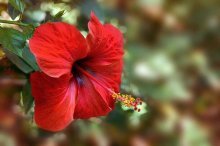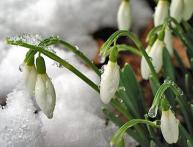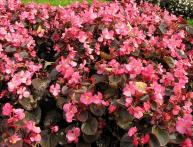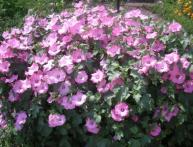Why the Chinese rose does not bloom, rules of care and stimulation for flowering

The tropical plant hibiscus is known in indoor floriculture under the common name Chinese rose. Although the relationship is neither with real roses nor with wild rose hips hibiscus does not have. This plant is a completely different kind of plant.
In indoor floriculture, hibiscus is in demand due to its beautiful flowers, which also serve as a useful brew for refreshing and invigorating tea. Many lovers are waiting for flowers. pamper their plants, creating the best conditions for them, in their opinion. And if the plant still does not produce flowers, they ask why the Chinese rose does not bloom or blooms very rarely, producing one or two flowers? Let's try to understand the intricacies of growing hibiscus.
Content:
- Chinese hibiscus or Chinese rose in nature
- Conditions for growing hibiscus indoors
- What to do if the Chinese rose does not bloom?
Chinese hibiscus or Chinese rose in nature
The very name of this plant suggests that its homeland is China. From the southern regions of this country, hibiscus, with the help of humans, appeared in almost all geographical areas with a tropical or subtropical climate.
In countries with cold climates, where Chinese roses are grown indoors and in greenhouses, flower growers must remember the tropical origin of the plant and, even in winter, maintain a temperature of no lower than + 15 degrees, and in summer no lower than +22 +25 degrees.
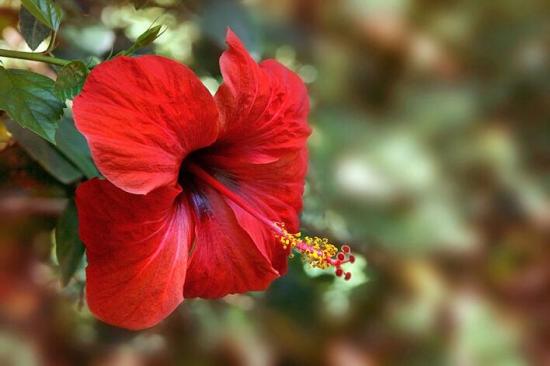
Chinese rose belongs to the genus Hibiscus, family Malvaceae. When growing wild, it is a fairly tall shrub; it reaches a height of about three meters. The plant is most often evergreen. The leaf blade is slightly corrugated, dark green, shiny, with serrated edges. The leaves are 10 - 15 cm long. They have petioles.
The flowers are large, when the buds open, the diameter of many flowers exceeds 15 cm.
There are white, cream, scarlet, pink, lilac flowers. There are forms with simple and double flowers. The stamens of the Chinese rose are folded into a long narrow tube and protrude forward from the flower. The petals are thin, no thicker than a piece of paper.
Flowers live for one day, but, as a rule, new ones open every day, so flowering is continuous for several weeks. In order for such flowering to occur even when grown indoors, the Chinese rose must create the appropriate conditions.
Conditions for growing hibiscus indoors
Before purchasing a plant, it needs to choose an appropriate location. The pot with the Chinese rose should be placed in a very bright place, however, in the summer months the flower should be protected from direct sunlight. It is important to monitor the temperature. Considering that seasonal fluctuations are unlikely to be avoided, in winter the temperature in the room with the Chinese rose should not fall below 12 - 15 degrees. At temperatures + 10 and below, the leaves turn yellow and fall off.
Watering and humidity
Starting from March, the plant needs regular watering. Frequency: every three days. However, it is necessary to avoid waterlogging and stagnation of moisture. In the warm season, the plant needs additional moisture.It is good to spray the rose, wipe the leaves with it and even moisten the floor in the room where this flower stands. If the humidity is too high, ventilate the room with the flower.
Feeding and replanting
You should start feeding the Chinese rose in March. For the first time, you can take complex fertilizers for roses in granules. From May to September, apply fertilizer regularly - twice a month. Any liquid mixture for indoor flowers will do. From the moment the hibiscus has mastered one pot volume, an annual replanting is needed. This should be done in the spring.
Varieties for indoor cultivation
The following varieties are best suited for indoor cultivation:
- Flamingo, pink flowers, simple
- Rio, pink flowers, dark center, simple
- Bangkok, yellow flowers, burgundy center, simple
- Rose, flowers pink, semi-double
- Ankara, yellow flowers, red middle, simple
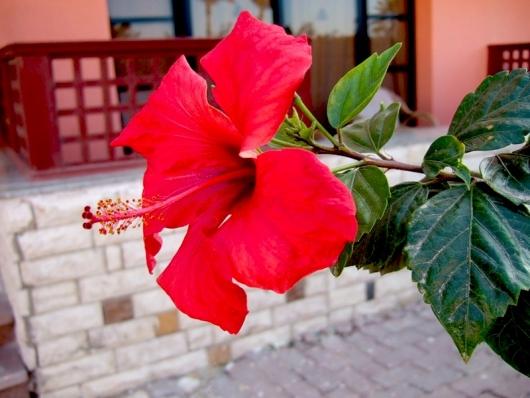
A novice gardener should not get carried away with rare varieties, especially those with double flowers. Sometimes it happens that the variety chosen is unpretentious and all the basic rules of maintenance and care are followed, but the treasured buds never appear.
What to do if the Chinese rose does not bloom?
To stimulate the Chinese rose to bloom, it is necessary to arrange a “winter”, that is, during the winter months, limit watering, do this no more than once a week, when the top layer of soil dries out. Keep the pot with the plant at a temperature of +15 degrees. In this state of dormancy, flower buds are laid in sufficient quantities. Lighting during this period should also be limited and the flower should not be placed in direct bright sun.
At the end of February - beginning of March, hibiscus should begin to be watered more often. It is good to loosen the soil after watering.Return it to a permanent place with good lighting and carry out the first, and then all regular feedings.
If the buds suddenly appear, but fall off without opening, then you need to pay attention to watering, carry them out more regularly, and if the temperature in the room is below + 18 and above + 26, then it is better to maintain it at +22.
At the beginning of the warm season, remove about three centimeters of soil from the flower pot and replace it with new garden soil, which must first be mixed with rotted compost, adding dry algae.
Drastic pruning will help the Chinese rose bloom. These plants produce flowers on the shoots of the current year. In October or March, cut off all shoots, leaving only three eyes on each of them. Also, the reason for the lack of flowers may be transfer in a pot that is too big. Until the plant masters it, flowers may not appear.
The above activities should definitely stimulate the Chinese rose to bloom and it will certainly delight you with beautiful flowers.
Video about growing Chinese roses:

